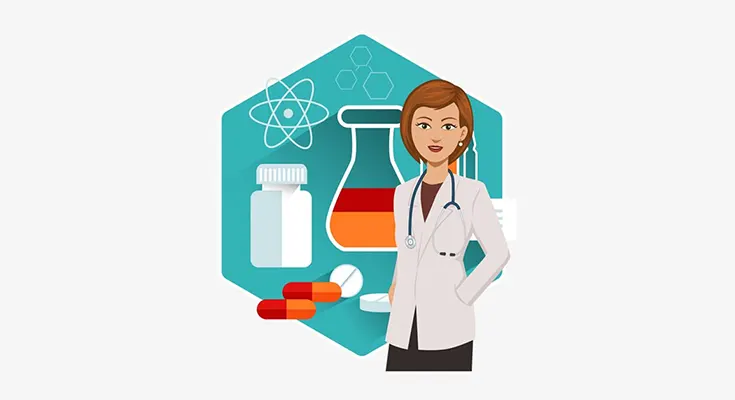Big data analytics is revolutionizing various sectors, including healthcare and pharmacy. In Indonesia, the integration of big data analytics into the pharmacy sector is transforming how drug safety, efficacy, and patient outcomes are monitored and improved. This article explores the role of big data analytics in Indonesian pharmacy, examining its benefits, applications, challenges, and future directions. Visit pafikotaaekkanopan.org.
Understanding Big Data Analytics
Big data analytics involves the use of advanced technologies and methodologies to analyze large and complex datasets that traditional data processing tools cannot handle efficiently. In the context of pharmacy, big data analytics leverages vast amounts of data from diverse sources to gain insights that can enhance drug development, safety monitoring, and personalized medicine.
Applications of Big Data Analytics in Indonesian Pharmacy
Drug Development and Research
Big data analytics plays a crucial role in drug development and research by:
- Accelerating Drug Discovery: Analyzing large datasets from clinical trials, genetic studies, and biomedical research helps identify potential drug candidates more quickly. For instance, integrating genomic data with clinical outcomes can reveal new drug targets and biomarkers.
- Optimizing Clinical Trials: Big data analytics can optimize clinical trial designs by identifying suitable patient populations, predicting responses, and managing trial logistics. This reduces the time and cost associated with drug development.
- Pharmacogenomics: By analyzing genetic and environmental data, big data analytics helps in understanding how individual genetic variations affect drug responses, leading to the development of personalized medicine.
Drug Safety and Pharmacovigilance
In drug safety and pharmacovigilance, big data analytics offers significant advantages:
- Enhanced Signal Detection: Analytics tools can process vast amounts of data from adverse drug reaction (ADR) reports, electronic health records (EHRs), and social media to detect safety signals more effectively. This improves the ability to identify potential safety issues early.
- Risk Assessment: Big data analytics helps in assessing the risk-benefit profile of drugs by integrating data from various sources. This allows for more accurate risk assessments and timely updates to drug labeling and usage guidelines.
- Post-Market Surveillance: Continuous monitoring of drug safety through big data analytics helps in identifying long-term adverse effects and ensuring that drugs remain safe and effective once they are on the market.
Patient Outcomes and Personalized Medicine
Big data analytics contributes to improving patient outcomes through:
- Predictive Analytics: Predictive models analyze patient data to forecast health outcomes, enabling proactive interventions. For example, predictive analytics can identify patients at high risk of drug-related complications, allowing for early interventions.
- Personalized Treatment Plans: By integrating data from various sources, including genetic information, EHRs, and patient demographics, big data analytics enables the development of personalized treatment plans tailored to individual patient needs.
- Population Health Management: Analyzing data from large populations helps in understanding health trends and patterns, leading to better management of chronic diseases and more effective public health strategies.
Challenges in Implementing Big Data Analytics
Despite its potential, implementing big data analytics in Indonesian pharmacy faces several challenges:
Data Privacy and Security
- Data Protection Regulations: Ensuring compliance with data protection regulations, such as the Personal Data Protection Act (PDPA) in Indonesia, is crucial for safeguarding patient information.
- Cybersecurity Threats: Protecting sensitive health data from cyber-attacks and unauthorized access is a major concern. Robust security measures and encryption protocols are necessary to secure data.
Data Quality and Integration
- Data Standardization: Variability in data formats and sources can complicate data integration. Standardizing data collection and reporting practices is essential for effective analysis.
- Incomplete Data: Incomplete or missing data can impact the accuracy of analytical models. Ensuring comprehensive data collection and management is crucial.
Technical and Financial Constraints
- Resource Limitations: Implementing big data analytics requires significant financial investment in technology and infrastructure. Limited resources can hinder the adoption of advanced analytics tools.
- Technical Expertise: The need for skilled data scientists and analysts can be a barrier. Training and retaining professionals with expertise in big data analytics are essential for successful implementation.
Recent Advances and Innovations
Integration with Artificial Intelligence (AI)
The integration of AI with big data analytics enhances its capabilities:
- AI-Driven Analytics: AI algorithms improve data analysis by automating processes, detecting patterns, and making predictions based on large datasets.
- Machine Learning: Machine learning models can learn from historical data and improve over time, providing more accurate insights and predictions.
Use of Cloud Computing
Cloud computing offers scalable solutions for managing and analyzing big data:
- Scalable Infrastructure: Cloud platforms provide scalable infrastructure, allowing for the storage and processing of large volumes of data without significant upfront investment.
- Data Sharing and Collaboration: Cloud-based solutions facilitate data sharing and collaboration among researchers, healthcare providers, and regulatory bodies, enhancing collective efforts in drug safety and research.
Enhanced Data Visualization
Advanced data visualization tools make it easier to interpret complex data:
- Interactive Dashboards: Interactive dashboards and visualizations allow users to explore data and insights in real-time, making it easier to identify trends and make informed decisions.
- Geospatial Analysis: Geospatial analytics helps in mapping and analyzing health data geographically, providing insights into regional health trends and drug safety issues.
Future Directions in Big Data Analytics for Indonesian Pharmacy
Expansion of Data Sources
Expanding the sources of data can provide a more comprehensive view of drug safety and effectiveness:
- Integration of Wearable Devices: Data from wearable health devices can offer real-time insights into patient health and drug responses.
- Social Media Monitoring: Analyzing social media platforms can provide additional data on patient experiences and emerging safety concerns.
Policy and Regulatory Developments
Developing policies and regulations to support the use of big data analytics in pharmacy is crucial:
- Data Governance: Establishing clear guidelines for data governance, including data sharing and usage policies, can facilitate the effective use of big data while protecting patient privacy.
- Regulatory Frameworks: Updating regulatory frameworks to accommodate advancements in big data analytics and AI will ensure that new technologies are used safely and effectively.
Enhancing Collaboration
Strengthening collaboration between stakeholders can enhance the impact of big data analytics:
- Public-Private Partnerships: Collaborations between government agencies, pharmaceutical companies, and academic institutions can drive innovation and improve data sharing.
- International Cooperation: Engaging in international partnerships and networks can provide access to global data and best practices, improving drug safety and research outcomes.
Conclusion
Big data analytics is transforming the pharmacy sector in Indonesia by enhancing drug development, safety monitoring, and personalized medicine. While challenges such as data privacy, quality, and resource constraints exist, recent advances in AI, cloud computing, and data visualization are driving progress. By addressing these challenges and focusing on future directions, Indonesia can leverage big data analytics to improve drug safety, efficacy, and patient outcomes, ultimately advancing public health and the pharmaceutical industry.





